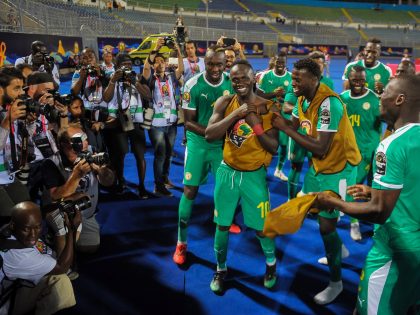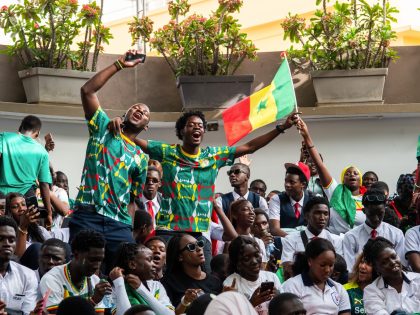Dutch elites and blackface
Most elites in the Netherlands are no different than racists when it comes to defending #ZwartePiet.

Dutch Prime Minister, Mark Rutte. Image by Roel Wijnants (Flickr CC).
When in December 2013 Chandra Frank compiled a list of common excuses Dutch people make for racism (much of it revolved around defending #ZwartePiet, the blackface character trotted out around Christmastime and who is well past his sell by date), we wondered how elite opinion in the Netherlands (that is politicians, writers, journalists, etcetera) react to #ZwartePiet. It’s no shock: they tie themselves into knots “explaining” it. And we’re not surprised.
The Netherlands as a country blithely engages with its history of slavery and or colonialism in places as far afield and diverse as Brazil, the Caribbean, Sri Lanka, India, South Africa and Indonesia.
As Katarina Hedren, in a piece about Sweden’s own uneasy relationship with racist images, name-checked the Dutch:
If there’s anything these last years have taught us, it is that smoking weed in public like the Dutch … doesn’t automatically make you cool, and it certainly doesn’t mean that we can trust your morals.
In any case, we compiled some of the arguments Dutch elites made to explain their affinity for, or reluctance to let go of, Zwarte Piet. Here—as we wish for a 2015 without #ZwartePiet (we can dream)—are a selection of the best rationalizations for Zwarte Piet in the Netherlands:
* Prime Minister Mark Rutte (where would we be without him?), in March reassured the nation that blackface is fine with the wise words you’d expect from a Prime Minister: “Zwarte Piet is just black, I cannot change that.” He also made some comment about struggling for days once Sinterklaas is long gone, to get the black make-up off his face when he dons blackface, while his black friends in the Caribbean don’t have to deal with the same problem. Yes, he did. Here, watch:
https://www.youtube.com/watch?v=A6ahnNZvW5k
* Ajé Boschhuizen is the head of the influential Sinterklaasjournaal, the main TV program for children during the Sinterklaas period (this annual program lasts from November 22nd to December 5th every year), and is basically in charge of the future of Zwarte Piet. He must have had a pedagogic epiphany when he introduced Grandpa Piet (one of the senior Black Pete characters who assists Sinterklaas) as Black Sinterklaas. Boschhuizen also compared Grandpa Piet to Desmond Tutu.
* Gert Oostindie, a very well respected professor of Caribbean history at Leiden University and Director of the Royal Netherlands Institute of Southeast Asian and Caribbean Studies, compared the clash over Zwarte Piet to what would happen if an ethnic group living in America pushed to ban turkey from the Thanksgiving table (yes really). “Because the intention is just to have fun … most white Dutch struggle to understand what’s wrong with a little blackface paint once a year,” he told a writer for the American magazine The Nation. Did he actually compare Black Pete to a turkey?
* In the documentary film “Our Colonial Hangover,” the founders of Pietitie, a pro-Zwarte Piet Facebook page (two million likes within 48 hours when it first went public) explain why Black Pete isn’t racist. Both argue that the often-debated lyrics of a children’s song “Even if I’m black as coal I mean well” indicate that Black Pete means well. When asked about the attire of Black Pete, they explained that his skin color is related to his Spanish background and from climbing through a chimney. The founders questioned why black men can’t just make children happy, as there is nothing racist about giving presents.
* Evelien Groenink, a Dutch journalist based in South Africa, suggested keeping Zwarte Piet and instead making Sinterklaas black. That, she argued, would be black empowerment. Unless we read her wrongly, she wants the flawed policy (by all accounts) that the South African government came up with to create a black middle class be applied to a blackface party in the Netherlands: Let’s not get rid of racism; let’s empower black people to participate in it.
* Eberhard van der Laan, mayor of Amsterdam and known for his atrocious policies against undocumented people, received a replica of the famous Golden Age painting “The Night Watch” on the day of the parade. On the replica, next to the original lieutenants and captains, one can now also see Sinterklaas and Black Petes. The painting is up in the Hermitage in Amsterdam as it is part of the Portrait Gallery of the Golden Age.
* Political party Leefbaar Rotterdam hung Black Pete dolls on lanterns to demonstrate the Dutch don’t bend for anti-Black Pete sentiments. Another sweet case of colonial amnesia.

* The Nederlands Centrum voor Volkscultuur en Immaterieel Erfgoed (Dutch Folk and Heritage Center), for attempting to transform Black Pete to Brown Pete – complete with straightened hair. Yes, we didn’t forget about that one. As we wrote before, please never seek a compromise on racist imagery.
Anyway, we could go on about Dutch people who invent new Pieten like “Cheese Pete” and “Clown Pete,” people who threaten to take Ramadan away if Zwarte Piet must go (a frequent lament on Facebook), the ones who still argue Zwarte Piet is fine because their black friends likes Black Pete. Just stop.



















